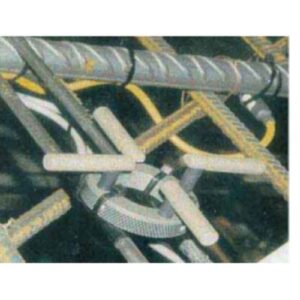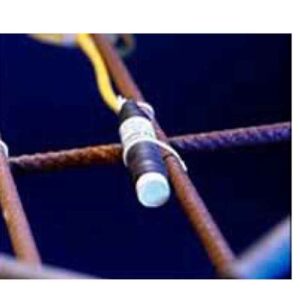Description
Reinforcement in concrete will not corrode if the protective film formed in the presence of highly alkaline pore fluid with a pH of about 13 is maintained. The passive layer may, however, be destroyed by the ingress of chloride ions or by a reduction in pH due to carbonation. When the passive film is destroyed, corrosion may occur in the presence of moisture and oxygen. During the corrosion process, anodic and cathodic areas are formed on the reinforcement.
At the anodes, iron dissolves and iron ions diffuse into the concrete, leaving behind electrons. At the cathodic sites, the iron ions combine with water and oxygen to form an expansive corrosion product, i.e., rust. The rate of corrosion is controlled by how easily the iron ions can move through the concrete from the anodes to the cathodes and it depends on the availability of oxygen and moisture at the cathodes.
The flow of irons ions through the concrete is associated with a potential field as shown on the right. The Mini Great Dane measures the surface potentials (relative to an Ag/AgCl reference electrode) and the electrical resistance of the cover concrete between the electrode and the reinforcement. The indicated potential, Ecorr, is in terms of a Cu/CuSO4 electrode (CSE), which are -110 mV lower in value than for the Ag/AgCl electrode. The risk of corrosion is evaluated by means of the steepness of the potential gradients measured at the concrete surface and the level of the electrical resistance of the cover concrete. A large potential gradient and a low concrete resistance will normally indicate a high corrosion rate, except in saturated concrete because of the low oxygen content.








Reviews
There are no reviews yet.